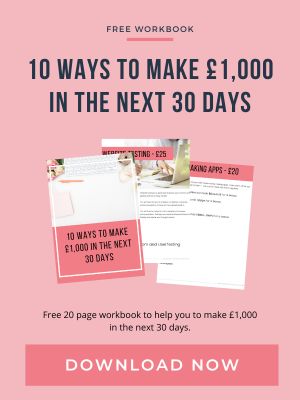Have you ever needed money quickly for an unexpected cost like a car or home repairs? If so, you may be considering an unsecured personal loan. These loans, also called blank loans, provide funds without requiring collateral like your home or vehicle as security.
Before jumping in, what does it mean for a loan to be unsecured? Unlike secured loans that require collateral ownership to act as security for repayment, unsecured loans literally have nothing tied to them except the borrower's promise to pay. This means if you fail to repay, the lender has no asset they can seize ownership of through foreclosure or repossession.
Because these loans involve more risk for the lender, they also tend to have higher interest rates or stricter approval qualifications than secured options. However, their lack of collateral requirements provides flexibility.
While unsecured credits offer convenience, it's important to understand both their benefits and risks compared to secured options before applying. In this article, we'll explore what exactly unsecured loans are, when they may be your best choice, and how to improve your chances of approval. In the following sections, we'll look closer at how unsecured credits work, when they make the most sense to utilize and tips for qualifying with careful planning.
Key Differences from Secured Loans
The biggest way unsecured personal loans differ from secured credits is that no collateral is involved. This has both advantages and disadvantages.
Blank loans don't require upfront collateral, as opposed to secured credits like mortgages, where you must own an asset like a home or vehicle before taking out the loan. If payments are missed, this asset becomes the lender's property. Unsecured credits don't require owned collateral, so you can qualify with less responsibility.
Blank loans usually have higher interest rates because lenders face more risk when lending unsecured credits, so interest rates tend to be higher than secured options. For example, a home equity line typically has lower rates than an unsecured personal loan. The higher the risk, the higher the cost to borrow.
With blank loans, you have variable APR flexibility. Secured fixed-rate credits lock in an interest percentage for the full term. Unsecured credits often have adjustable rates that can rise or fall based on current market conditions. This provides flexibility but less long-term certainty.
Unsecured loans do not require property assessments, titles, or vehicle paperwork like secured credits. They simplify the application process, but approvals may be tougher to earn for the same reason.
In summary, unsecured credits remove the hassle of collateral but charge higher rates as a result. Their flexibility also comes with more out-of-pocket costs and risk over time for borrowers and lenders alike compared to secured financing.
Best Uses for Unsecured Credits
Here are some examples of situations where an unsecured personal loan may be the best option:
Emergency Expenses: If you face a large, unexpected cost like major car repairs or medical bills, an unsecured loan allows quick access to funds without assets tied up. Just be sure not to borrow more than absolutely needed.
Home or Auto Repairs: Smaller maintenance or renovation projects that don't require large loans may be good matches for unsecured personal loans due to their flexibility. Just make sure the expense meets lender minimums.
Debt Consolidation: For those with high-interest credit card balances, an unsecured personal loan could potentially save on total costs by rolling multiple bills into one lower-rate monthly payment. Reduce expenses to limit added future debt.
Starting a Business: Entrepreneurs in the early stages may lack collateral but still require startup capital, which an unsecured loan provides before securing business assets as collateral later on. Rigorous cash flow planning is a must.
You can always determine when the benefits of an unsecured personal loan are likely to outweigh the higher interest costs attached to the riskier loan terms by considering your specific needs and ability to repay without collateral as security. It wouldn't pay to use blank loans improperly.
Important Factors to Consider
There are a few important things for those considering an unsecured personal loan to look into before applying:
Credit Checks & Scores: Lenders will review credit history and assign a numerical FICO score, which directly impacts approval odds and loan terms offered. Aim for scores in the high 600s or above.
Preapproval Estimates: Look for online forms to see estimated rates, fees, and maximum amounts available without a hard credit check all at once. This will give you a good picture of affordability.
Potential Fees: Many lenders charge an upfront origination fee equivalent to a few percent of the loan. Late or missed payments also incur extra penalties. Factor fees into total costs.
Income & Debt Ratios: Strong income that allows at least a 1/3 payment-to-income ratio, along with minimal existing debt balances, improves qualification. Simplify the budget for transparency.
Flexible Loan Sizes: Amounts usually range from $1,000 to $50,000, depending on individual factors like income, but aim to borrow the minimum to cover expenses alone if possible to pay back the quickest.
Careful evaluation of these key underwriting conditions gives insight into both getting approved for affordable personal loans and maintaining healthy finances afterward during the repayment period.
Alternatives If Denied
If denied for an unsecured personal loan, a few other options to consider include:
Secured Credit Cards: These cards use available credit on your existing credit lines as collateral. While offering variable interest, approvals may be easier with secured cards, even for those with average/fair credit scores. Just don't spend beyond what can be repaid each month.
Signature Loans are similar to personal loans, but their terms tend to be shorter, at 6-36 months, making payments more manageable. Research companies carefully, as rates/fees vary significantly more than bank loans.
Peer-to-Peer Lending: Websites connect those needing loans directly to investors willing to fund them. Rates often beat those of credit cards. Websites like billigeforbrukslån.no/blancolån/ make this possible. Credit requirements are higher than those credit cards but lower than retail lenders. Repayment comes out of your bank account automatically each month.
Small Personal Loans: If a credit union or community bank membership provides access to small loan programs, rates may beat payday loans or overdraft fees from cash advances of just a few hundred dollars for quick fixes, paid back in 6 months or less.
Considering alternatives like these that better suit your personal finances and repayment abilities than payday advances keeps borrowing costs affordable when traditional approval doesn't work out. Comparing several options finds the most suitable backup plan.
Maximizing your Approval Chances
Getting approved for an unsecured personal loan often means taking practical steps to maximize your chances through careful planning. Here are some tips for qualifying:
Improve Your Credit Score: Payment history counts most towards your FICO score used by lenders. Pay all bills on time for 12-24 months and allow disputed items to be removed to increase approval odds.
Check Your Credit Reports: Examine for errors that hurt your score unfairly and write dispute letters to fix them. Fact-checking leads creates the most accurate application profile. Click here for information on how to read your credit report.
Apply with Multiple Lenders: Too many applications grouped too close together could lower your score briefly, but comparing offers across banks, credit unions, and online lenders gets you the best potential terms to work with.
Provide Proof of Income: Pay stubs or tax forms proving steady employment make you a safer bet for loan repayment than applicants lacking income documentation.
Ask for a Co-Signer: Adding the credit history and income potential of a family member or trusted friend to cover the loan together improves your chances. Their responsibility reduces the lender's risk.
With diligent preparation to maximize your application and planning to make loan repayment stress-free, following these tips gives you your best shot at securing an affordable, unsecured personal loan when needed.
Conclusion
Unsecured personal loans provide an important option for consumers when quick access to funds without collateral assets is necessary. You can determine if these flexible loans represent your most affordable and suitable choice at a given time if you evaluate your specific needs, credit profile, and available alternatives.
While more expensive than secured financing due to higher risk for lenders, their lack of red tape makes unsecured personal loans convenient to qualify for emergency or smaller expenses for those prepared to pay back on their word alone. With careful usage of available resources, they help responsible borrowers handle life's unpredictable costs successfully.





